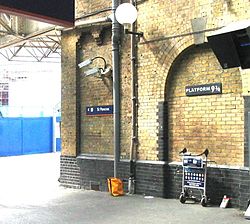This article needs additional citations for verification .(December 2021) |

This is a list of fictional railway stations (as opposed to genuine railway stations portrayed in fictional works or context).
Contents
- Branch line
- England
- Scotland
- Wales
- Northern Ireland
- Poland
- United States
- Main line
- England 2
- Scotland 2
- Wales 2
- United States 2
- Austria
- Other
- Monorail stations
- Europe
- United States 3
- Rapid transport stations
- Stations on atmospheric railways
- Island of Sodor
- TR lines
- Japan
- See also
- Sources
- Further reading
